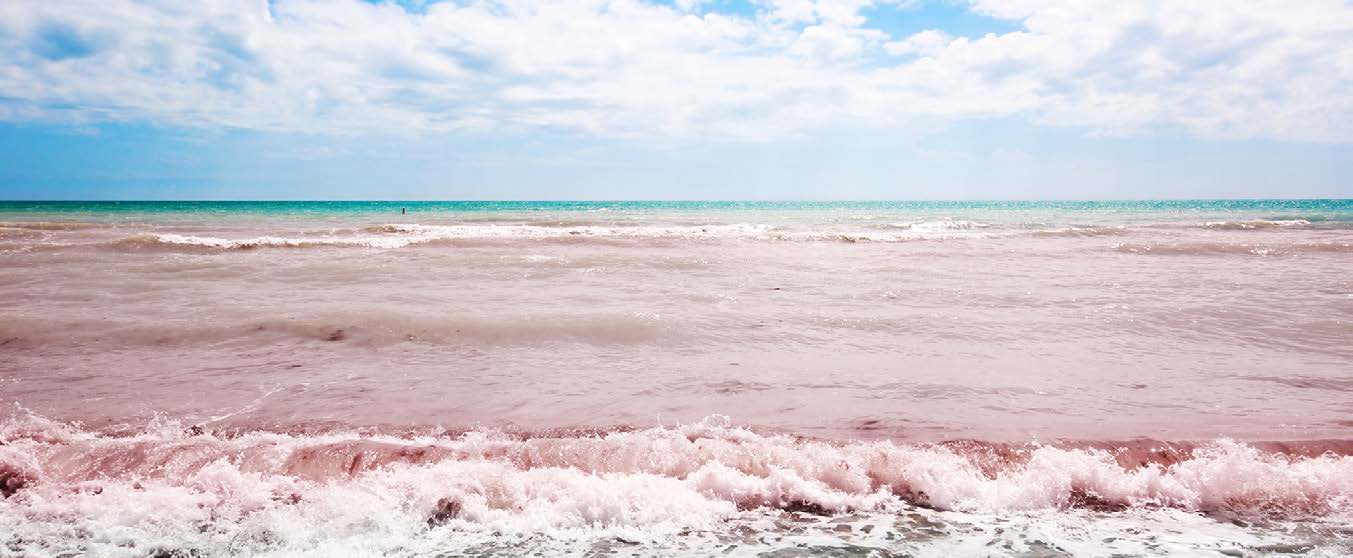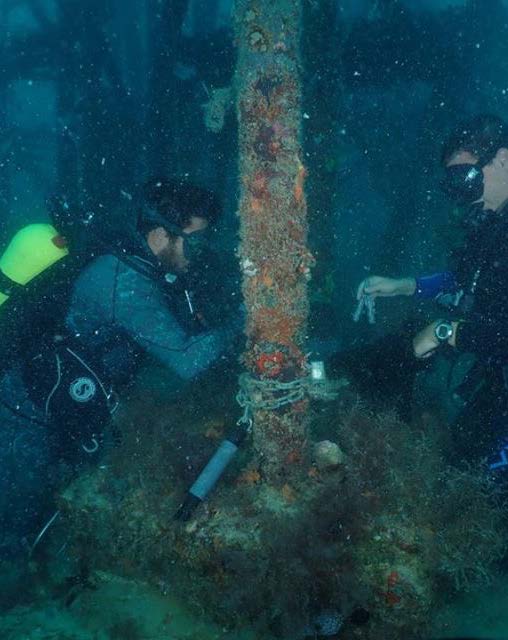Now You See It , Now You Don’t by Dr. Michael L. Parsons, The Water School, Florida Gulf Coast University
 The dinoflagellate, Karenia brevis (aka “ Florida Red Tide ”) generally blooms along the coast of Southwest Florida, typically starting at the end of September or beginning of October and ending in early February. Blooms are thought to initiate offshore (10-40 miles out) and move
The dinoflagellate, Karenia brevis (aka “ Florida Red Tide ”) generally blooms along the coast of Southwest Florida, typically starting at the end of September or beginning of October and ending in early February. Blooms are thought to initiate offshore (10-40 miles out) and move
inshore with the winds and currents. Blooms most commonly make landfall first near Venice,
but not always. Not every year is typical, either. This year, the bloom did not start until late November. Last year, the bloom was first spotted off of Naples. Our first signs of this year’s blooms were seabirds (cormorants) waddling along the beach in a disoriented manner (like many Spring Breakers) – poisoned by consuming offshore baitfish killed by red tide.
 One of our biggest challenges in trying to cope with red tide is that it blooms “suddenly” with no warning. Where does it come from? Why does it bloom? Scientists who study red tide focus on the “initiation phase”. Oceanographic conditions must be favorable for a red tide bloom, but in a “Goldilocks” sort of way: i.e., if the conditions are too weak, red tide won’t bloom; if the conditions are too strong, something different will bloom (diatoms). Where does red tide “lurk” while it waits for its moment in the sun? Some scientists suspect that a “seed” population exists, just waiting for those optimal conditions. This seed population may consist of resting spores known as cysts. These
One of our biggest challenges in trying to cope with red tide is that it blooms “suddenly” with no warning. Where does it come from? Why does it bloom? Scientists who study red tide focus on the “initiation phase”. Oceanographic conditions must be favorable for a red tide bloom, but in a “Goldilocks” sort of way: i.e., if the conditions are too weak, red tide won’t bloom; if the conditions are too strong, something different will bloom (diatoms). Where does red tide “lurk” while it waits for its moment in the sun? Some scientists suspect that a “seed” population exists, just waiting for those optimal conditions. This seed population may consist of resting spores known as cysts. These
cysts would lie dormant in the sediments until an environmental trigger caused them to germinate – and BOOM!, you get a bloom.
This is what happens up in the Gulf of Maine in the Northeast. A different dinoflagellate (Alexandrium catenella) forms cysts that overwinter in the sediments that later germinate causing
the next bloom. Could Florida Red Tide do the same thing? It helps to explain why it suddenly shows up (millions of cysts in the sediment germinating at once; excystment). It also explains why
the bloom suddenly dissipates (the cells form cysts that then sink back down to the sediments; encystment). Now you see it – now you don’t.
At the Water School here at FGCU, we are working to determine if Karenia brevis forms cysts – a sister species (Karenia mikimotoi) does – and if these cysts accumulate in the sediments. If this is proven, it will greatly enhance our understanding of red tide and will provide us with the capability to potentially forecast when blooms start and end (by understanding the environmental triggers that cause excystment and encystment) as well as bloom intensity (by looking at cyst accumulations in the sediments; lots of cysts = lots of cells = bigger bloom). As we all know, red tide causes serious environmental and economic damage to Southwest Florida.
We are all concerned that our activities are driving red tide events and making them worse. What we must all remember, however, is that these blooms initiate naturally with no known human influence, and that these blooms terminate for unknown reasons. The answers may lie down on
the seafloor.

by Dr. Michael L. Parsons, The Water School, Florida Gulf Coast University





Leave a Reply
Want to join the discussion?Feel free to contribute!